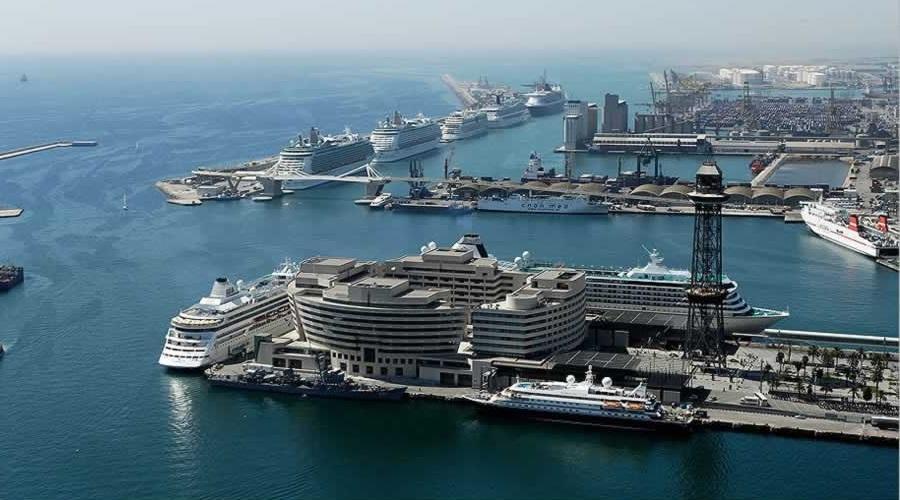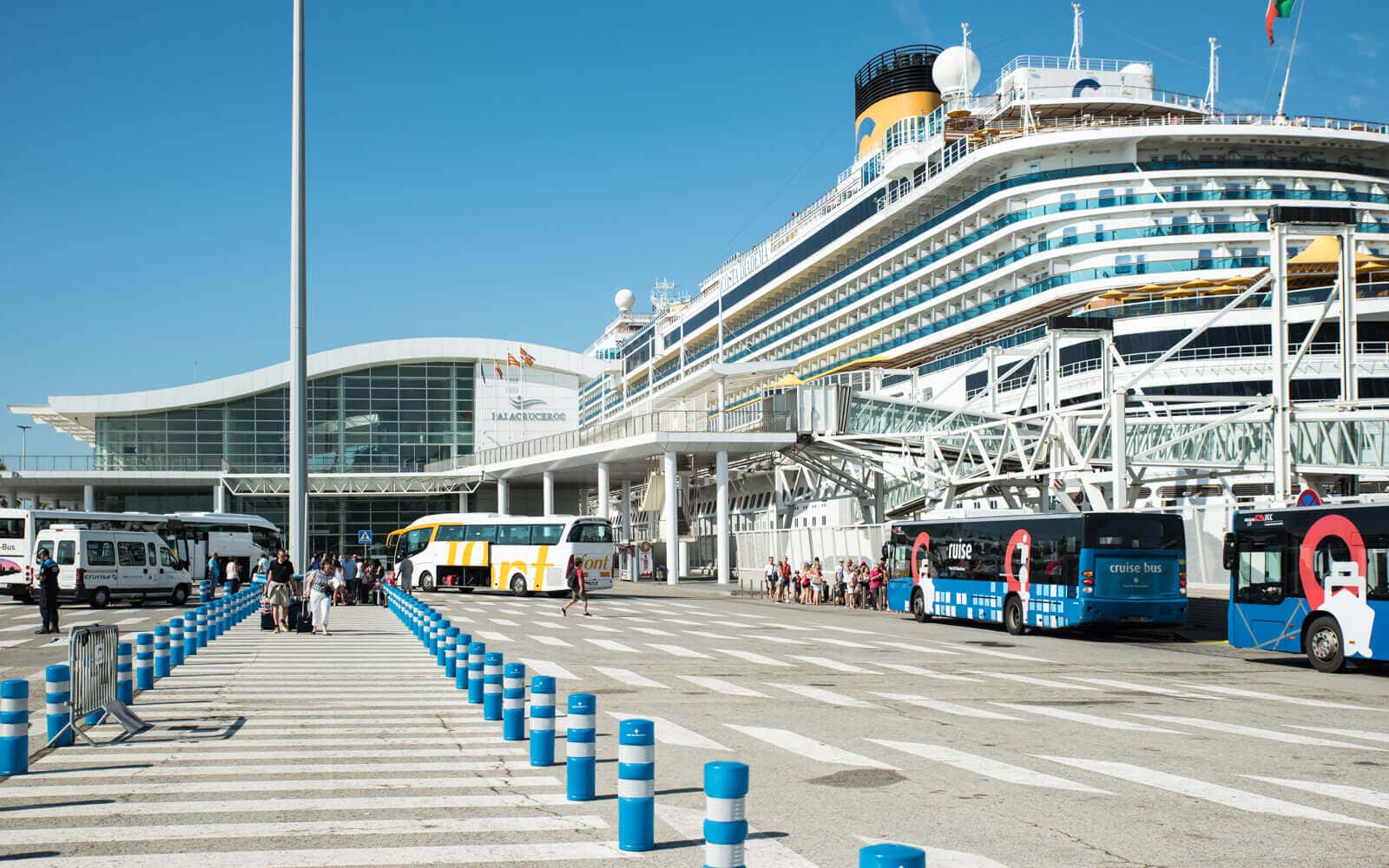Travel Advisors Embrace Barcelona's Cruise Ship Ban Without Significant Concern
Travel advisors embrace Barcelona's cruise ship ban without significant concern. Barcelona, known as Europe's busiest cruise port, is implementing a long-anticipated ban on passenger ships at its central cruise terminal, Muelle Barcelona Norte, reflecting a trend seen in other major European cities aiming to separate city centers from cruise ship traffic.
Author:Michael RachalReviewer:Finn WildeOct 25, 202335.9K Shares718.3K Views

Travel advisors embrace Barcelona's cruise ship ban without significant concern. Barcelona, known as Europe's busiest cruise port, is implementing a long-anticipated ban on passenger ships at its central cruise terminal, Muelle Barcelona Norte, reflecting a trend seen in other major European citiesaiming to separate city centers from cruise ship traffic.
This change, which has been five years in the making, will directly affect passengers on midsize and small ships belonging to cruise lines like Azamara, Oceania, Regent Seven Seas, and Virgin Voyages. These ships will now be directed to dock at piers located to the south of the city center, primarily at Moll Adossat, where larger cruise ships have traditionally docked.
Despite this significant change, traveladvisors appear unfazed, expressing the view that it won't substantially impact the overall visitor experience in Barcelona.
"Although it was convenient to be in the city center in Barcelona, the distance from Moll Adossat terminal to the main tourist area of Barcelona, such as La Rambla, is only a 20-minute shuttle ride," said Michelle Fee, founder and CEO of Cruise Planners.
James Cole, the founder and CEO of Panache Cruises, a travel retailer headquartered in Austin, Texas, emphasized that Barcelona is not the solitary European city reconsidering its approach to managing cruise ship traffic.
“„There are a number of cities across Europe that are looking at ways to accommodate the growing number of cruise ships, and as always, the cruise lines will work hard to accommodate what is required by the local planning authorities.- James Cole
These changes echo decisions made in other European cities. For example, Venice approved a ban on cruise ships in its city center in 2021 following an extended campaign, and Amsterdam recently voted to relocate its central cruise terminal due to concerns about air pollution and over-tourism. Despite these shifts, Cole remains optimistic that the changes in Barcelona will not diminish the overall visitor experience.
"It's disappointing that cruise ships will no longer be able to dock at the more central dock in Barcelona, as clearly it was a more convenient way for passengers to access the center of the city," he said. "However, given there is an alternative dock, we don't anticipate that it will cause too much disruption, and Barcelona will continue to be a great port for both embarkation and disembarkation."
Marisel Aleman, the Vice President of Cruise Elite based in Ormond Beach, Florida, noted that cruise passengers are accustomed to not always being able to dock directly in European ports. It's common practice for cruise ships, especially the larger ones, to dock at locations situated away from city centers.
“„It is a matter of setting expectations at the time of booking and as they are exploring sightseeing options. Many ships actually depart from Barcelona, thus that just means a taxi ride. It is all a matter of communication with the clients.- Marisel Aleman
A Changing Barcelona
The groundwork for this change dates back to a 2018 agreement between city authorities and the Port of Barcelona, aimed at curbing ship emissions within the city center. Since that time, cruise tourism in the city has seen substantial growth, making the port Europe's busiest for cruises, with an annual influx of 2.5 million passengers, as reported by CLIA.
The closure of the Barcelona Norte port to all passenger ships, including ferries, will lead to a redirection of 340 cruises and ferry calls each year to the Adossat wharf. Furthermore, in 2026, the Barcelona South terminal, which currently receives about 70 annual ship visits, will also cease operations, consolidating all cruise activities at Adossat. This transition requires an investment exceeding $283 million, including the implementation of shore power technology to reduce emissions.
CLIA has indicated that shore power will be available by 2026. The organization also highlighted the cruise industry's commitment to improving its impact on the city through the Port of Barcelona's Cruise Sustainability Council, of which CLIA is a member. This ensured that CLIA members had sufficient time to adapt to the forthcoming changes.
The city has blueprints to transform the central port area into a public open space, allocating roughly 45,000 square feet for the enjoyment of the public. This move is in alignment with Barcelona's broader efforts to combat over-tourism and mitigate noise pollution, which extend beyond just the cruise industry. In 2022, the city introduced measures to restrict the size of tour groups in the city center to 30 individuals and also prohibited the use of megaphones during tours.
Jump to

Michael Rachal
Author
Michael Rachal believes that luxury lies in the details. With over 20 years of experience in the luxury travel industry, he has crafted hundreds of bespoke itineraries for clients seeking personalized, unforgettable experiences.
Whether guiding clients through private cultural tours or curating culinary journeys with world-renowned chefs, Michael ensures that each trip is tailored to perfection.
His ability to anticipate needs and exceed expectations has earned him a reputation as a leading expert in luxury travel.

Finn Wilde
Reviewer
For Finn Wilde, the wilderness is more than just a destination - it’s a way of life. Over the past decade, he has led multiple expeditions in some of the world’s most remote regions, from the icy fjords of Greenland to the rugged trails of Patagonia.
Finn emphasizes sustainability in all of his adventures, helping participants connect with nature while promoting responsible exploration. His expeditions inspire individuals to explore the great outdoors while fostering a deep respect for the environment.
Latest Articles
Popular Articles
